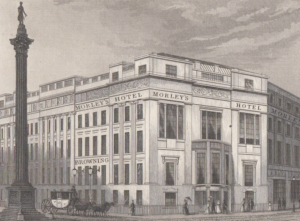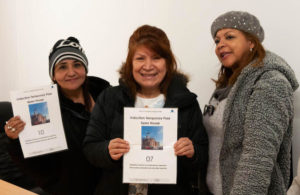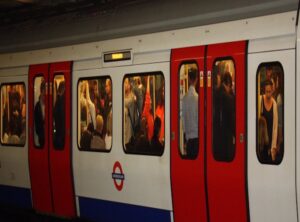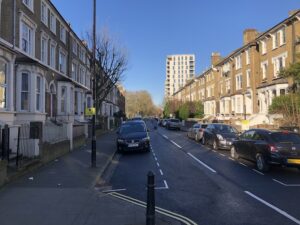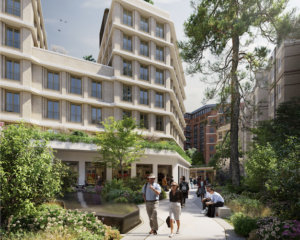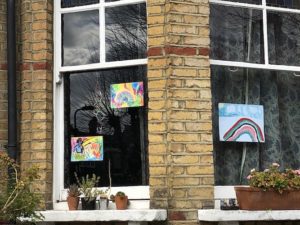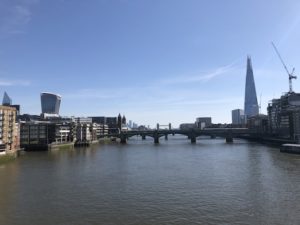Unseen, sometimes highly technical, and often of little interest to the public, early warning systems alert specialists and decision-makers to approaching anomalies and extreme events. There are few better for London’s economy than its public transport system. Our bustling stations, cycleways and buses both reflect and create the city’s growth and also indicate when there are problems. When news broke that the coronavirus was spreading in London, we immediately saw ridership fall on the Tube, as people took personal decisions to stay at home, well before government announced the enforced lockdown.
To fight the spread of coronavirus and allow essential journeys to continue, Transport for London introduced in a matter of days emergency measures that would usually have taken weeks if not months to roll out. Every London Underground train, bus and tram in our city of nine million people has been treated with a special anti-viral cleaning fluid. We’re controlling passenger numbers at the busiest stations and we’ve suspended TfL and Crossrail work on 300 construction sites. Believing Londoners to be an ally in this battle, we’ve taken the hard decision to suspend the congestion charge and ultra low emission zone so as not to hinder frontline staff making essential journeys. We’ve been using every possible means of telling people to stay at home – through station PA announcements, posters, station whiteboards, the TfL website, social media, and millions of emails to registered TfL customers.
The measures have been a success: travel on Tube and rail services has plummeted by almost 95 per cent, and bus journeys across London are down by 85 per cent. In an astonishing illustration of how TfL has been re-purposed to positively dissuade travel, on Easter Sunday we recorded the lowest level of Tube journeys in a single day since the 19th century (barring the one day in normal years when the Tubes don’t run – Christmas Day). Discouraging journeys has been crucial to ensuring that overcrowding on the network has been absolutely minimised and that people can travel as safely as possible.
News reports this week indicate that the government is beginning to think seriously about what happens next. Will schools go back and, if so, will it be a full or a partial return for the vast numbers of schoolchildren in London who can be so often spotted on our buses? Might non-essential shops re-open and outdoor work be kickstarted, leading to numbers returning to the Tube? As we think about the recovery over the coming weeks and the eventual lifting of the lockdown, transport will be key to restoring London’s heartbeat.
It’s vital that government decisions are informed by an understanding of what the capital’s transport system can and can’t deliver. It is operationally impossible to run a full Tube service while a virus is still contributing to up to a quarter of frontline Tube staff being absent. And although staff are returning, this is an enormous, complex system that defies simple, superficially attractive solutions. If these were as easy as getting retired drivers back in to drive trains, we would have done it. But with many retirees falling into shielded groups and even recently-retired drivers needing refresher training, which can only be done in a cab less than two metres in width, you can see that there are problems with this idea.
There are many other questions that must be answered. How will social distancing be observed on the Tube? Take the Victoria line. It runs every 100 seconds during the morning rush hour and the trains carry 1,000 passengers, or 125 per carriage. With a strict two metre radius around each of them, each carriage could carry just 21 people – a sixth of normal rush hour loading. It’s worth remembering that normal planning assumptions for the Tube are that four people occupy each square metre.
The bus network too presents significant and unique challenges. It is London’s most popular form of travel, seeing six million journeys a day in normal times. We are now seeing just one million, but we know that a loosening of restrictions will see those numbers rise. With just 15 per cent of normal travel being conducted, we’ve nevertheless been running 85 per cent of bus capacity. This has created space for social distancing inside the vehicles and the opportunity to introduce middle door loading, in order to better protect drivers. But as passenger numbers swell we face an unprecedented challenge in continuing to ensure a safe journey for everyone.
The use of non-medical face coverings on all public transport may have to become a condition of travel, but this would have implications for transport operators too. TfL staff will understandably look to their employer for equivalent protection.
The most harmful and self-defeating reaction to these constraints would be people returning to their cars – something we emphatically don’t want. It would entrench inequality, as nearly half of London’s households don’t own one, and it would be disastrous for air quality, carbon emissions and public health. We can’t replace one public health crisis with another, be that one borne of obesity or pollution.
The new world of plummeting demand for public transport will, unavoidably, entail plummeting resource. On safe cycle routes it’s clear we won’t have the money to do everything we want, but will this pandemic provide renewed clarity about the advantages of taking to your bike, and can we assist in encouraging those who are able away from the bus and the Tube? I’ve spent much of the last two years avoiding the rush hour crush on Southeastern trains, preferring a cycle ride to City Hall. The question is how to tempt hundreds of thousands more to do the same.
There are dozens of other unknowns that will shape, surprise and frustrate our best laid plans. Aggressive staggering of work start times may mitigate some of impact of restrictions being slackened, but would it be observed and how would it fit with school drop-offs and childcare responsibilities? Will the home working revolution many of us have experienced become a new normal and to what extent? Forty-seven per cent of journeys on our transport system are discretionary. That is to say they are not commuting trips or other travel for work or for education. To what extent will these discretionary journeys diminish and what effect will that have on jobs and the economy?
We are slow to recognise genuine British success stories, but London has some of the best transport planners and operational staff anywhere in the world. I’m confident that if anyone can rise to this challenge, it is them. Likewise, the men and women on our frontline have shown bravery and dedication under extraordinary pressure, and our trade unions have provided steadfast support and moral courage.
We are well placed to deal with the challenges ahead, but we can’t deliver the impossible. If the government and the public get behind us, however, we’ll strain every sinew to re-fashion transport in a post-lockdown London so that it can be as agile, responsive and inventive as London itself.
Heidi Alexander is the London Mayor’s deputy for transport and deputy chair of Transport for London. Follow her on Twitter.
OnLondon.co.uk is doing all it can to keep providing the best possible coverage of London during the coronavirus crisis. It now depends more than ever on donations from readers. Individual sums or regular monthly contributions are very welcome indeed. Click here to donate via Donorbox or contact davehillonlondon@gmail.com. Thank you.

